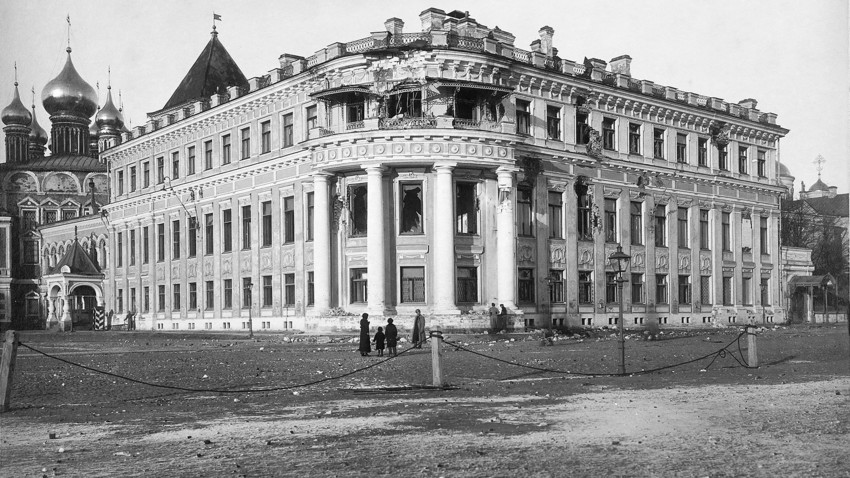
Maly Nikolaevsky palace after the bombardment of the Moscow Kremlin. Photograph by D.M. Gusev. November 1917.
If the Bolshevik uprising in Petrograd on Oct. 25 was relatively swift and bloodless, the same cannot be said about what played out in Moscow.
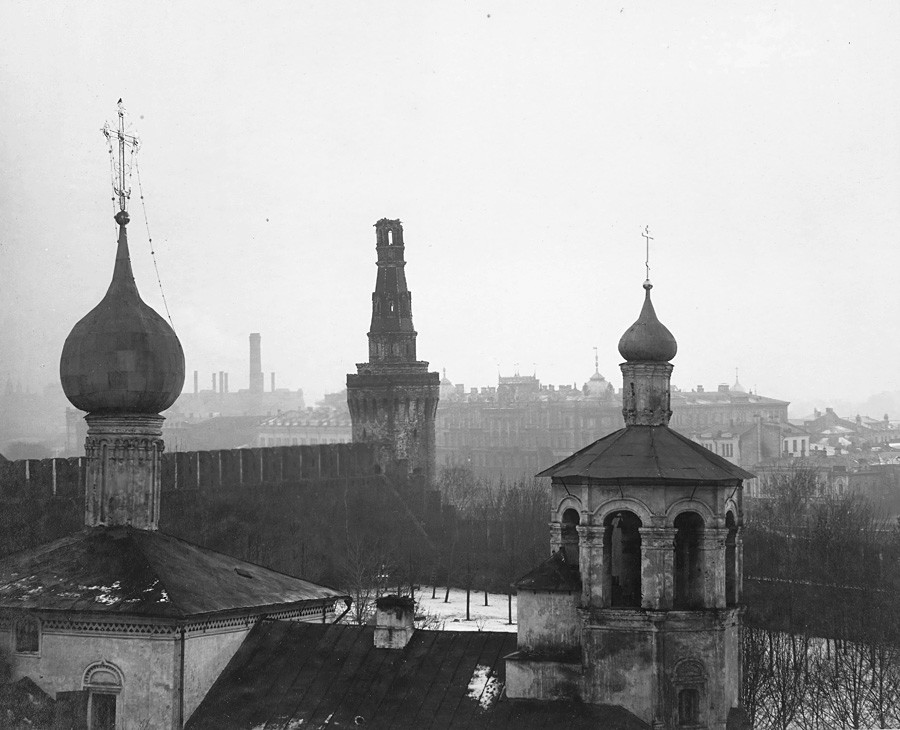
The Church of S.V. Constantin and Elena Beklemishevskaya tower after the bombardment of the Moscow Kremlin. Photograph by P.P. Pavlov. Nov. 5-16, 1917.
The fighting there lasted for several days and left hundreds dead. The events in the current capital are sometimes called the beginning of the civil war in Russia. The Kremlin, the heart of the old city, witnessed the worst of the conflict.

A hole in the central wall of Assumption Cathedral after the bombardment of the Moscow Kremlin. View from the outside. Photograph by P.P. Pavlov. Nov. 5-7, 1917.
When news of the uprising in Petrograd (now St.Petersburg) - and the overthrow of the provisional government - reached Moscow, Bolshevik troops were ordered to take the Kremlin. The revolutionary regiments occupied the stronghold on Oct. 26. They met no resistance.
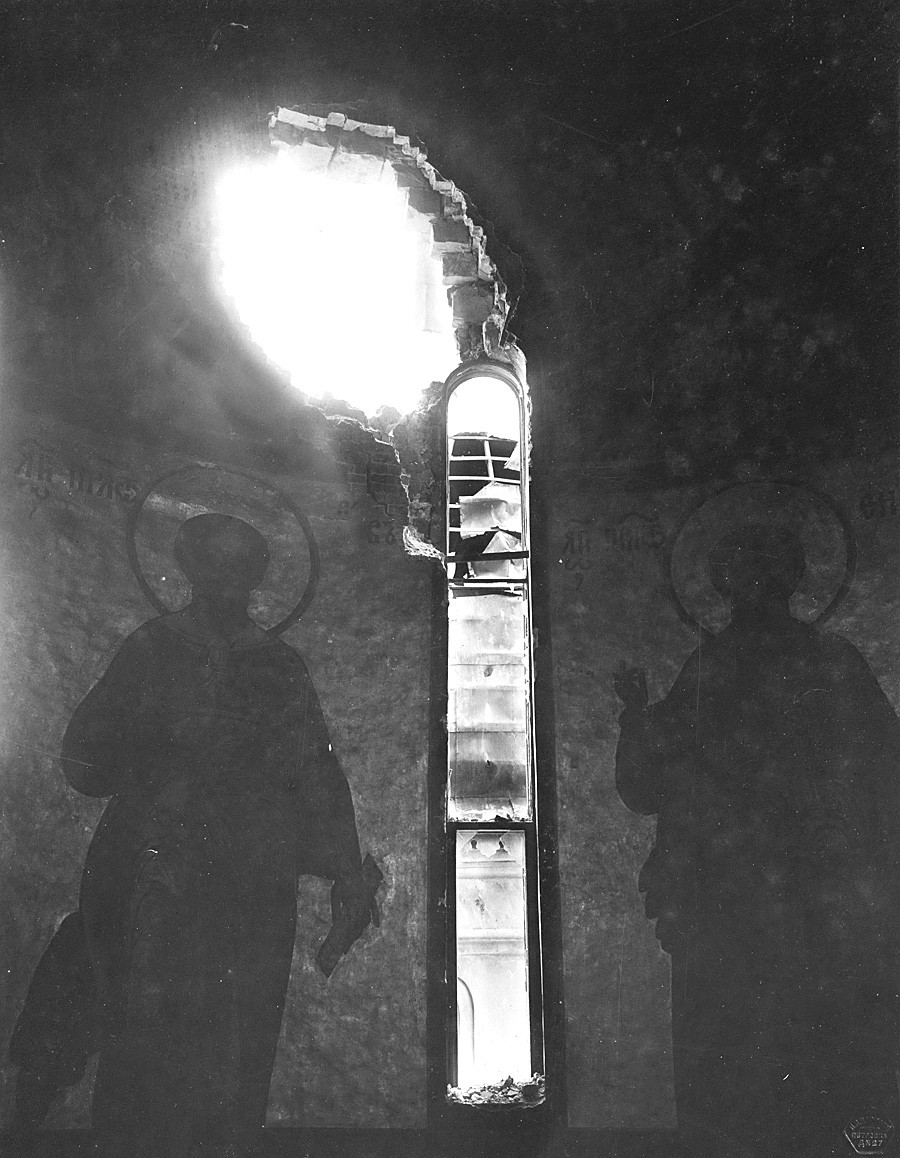
Holes penetrating the central walls of Assumption Cathedral after the bombardment of the Moscow Kremlin. View from the tower. Photograph by P.P. Pavlov. Nov. 5-7, 1917.
Meanwhile, those who opposed the Bolsheviks started to rally in the city. The fighting force they mainly relied upon were army cadets and students from military schools.
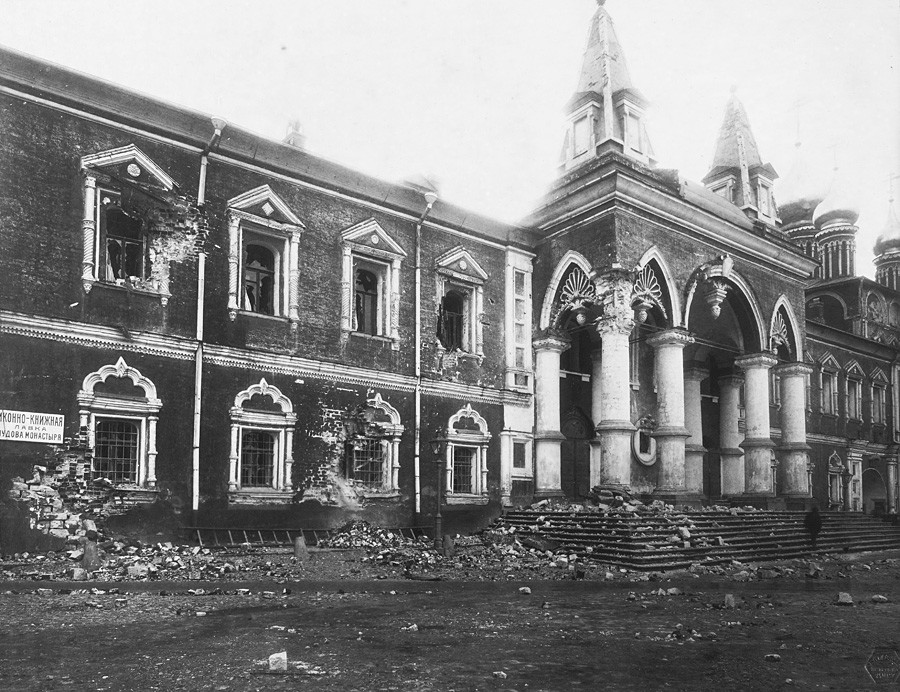
The main complex and Alexei Church of Miracle Monastery after the bombardment of the Moscow Kremlin. Photograph by P.P. Pavlov. Nov. 5-16, 1917. Museum of the Moscow Kremlin.
Cadets entered the Kremlin, taking advantage of the fact that the revolutionary soldiers had poor communication with their superiors. They were told that the forces loyal to the provisional government had defeated the Bolsheviks, taking the entire city in the process.
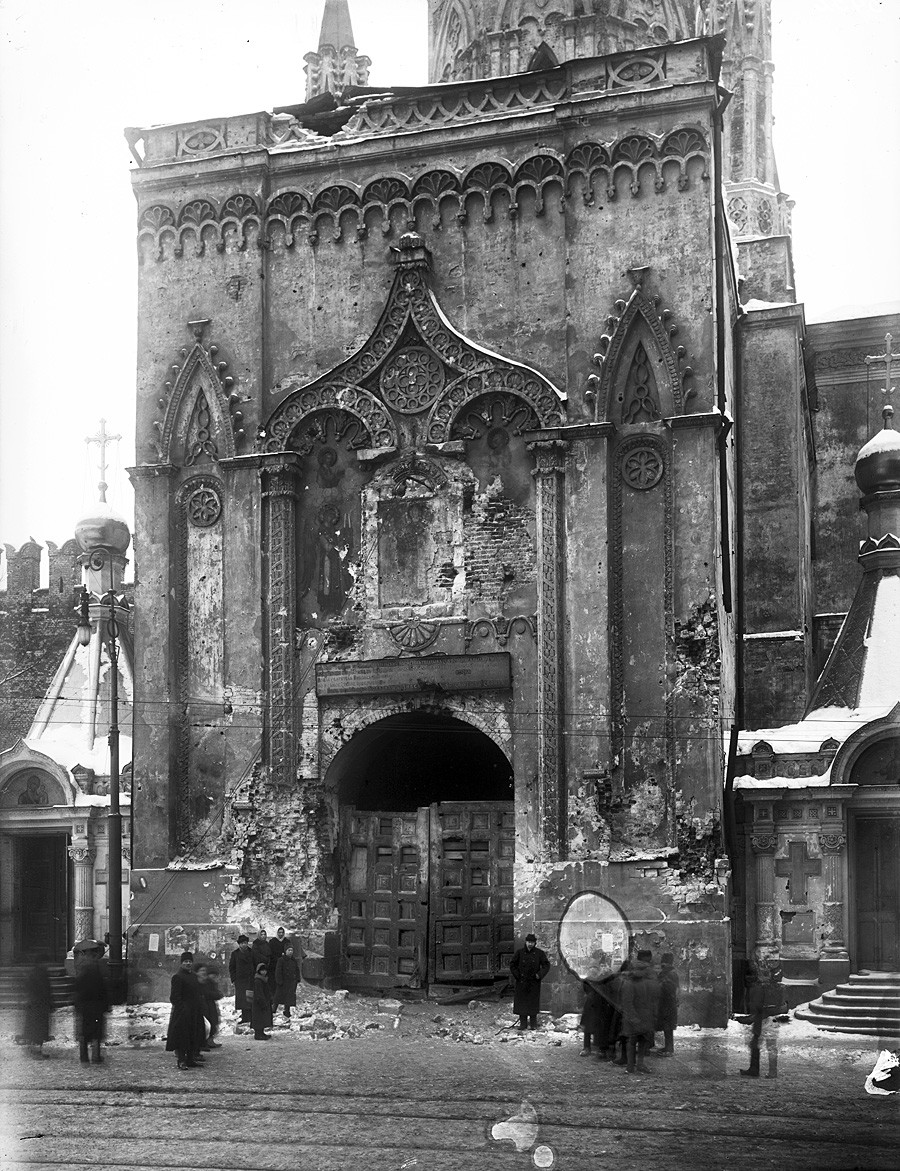
The destruction on the outer barbican of Nikolai Tower after the bombardment of the Moscow Kremlin. View from Red Square. Photograph by D.M. Gusev. November-December 1917.
The revolutionary soldiers surrendered their arms. Many of them (estimates say between 50 and 300) were shot by the cadets
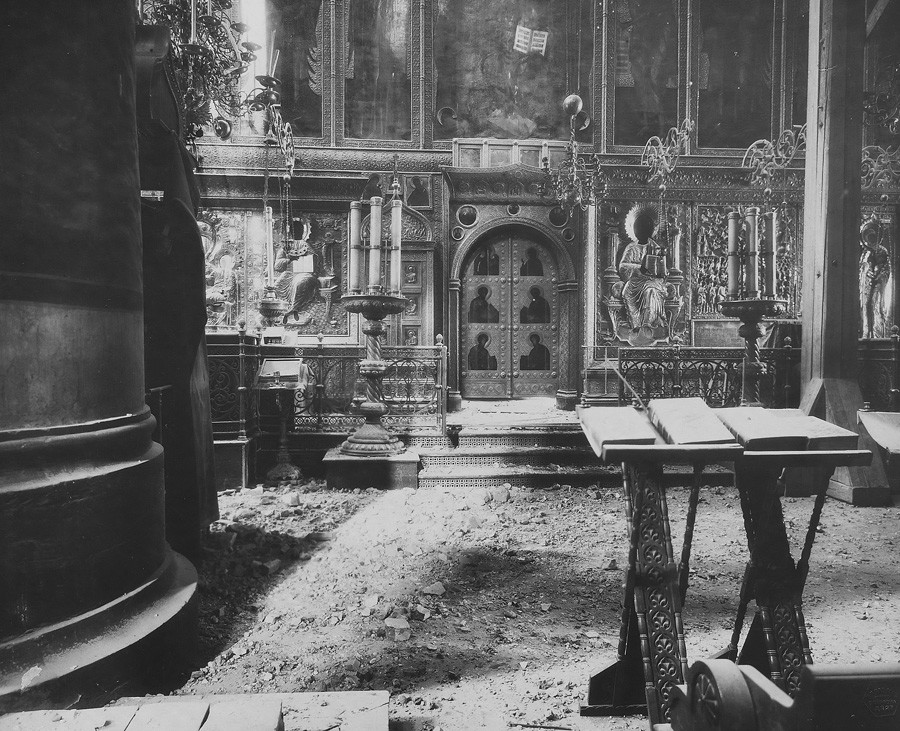
The interior of Assumption Cathedral after the bombardment of the Moscow Kremlin. View of the holy doors. Photograph by P.P. Pavlov. Nov. 5-7, 1917.
From Oct. 28, the anti-Bolshevik militants controlled the Kremlin. But the Bolsheviks didn’t give up and the following day witnessed fierce clashes – some Moscow districts including the Kremlin were bombarded with artillery shells.
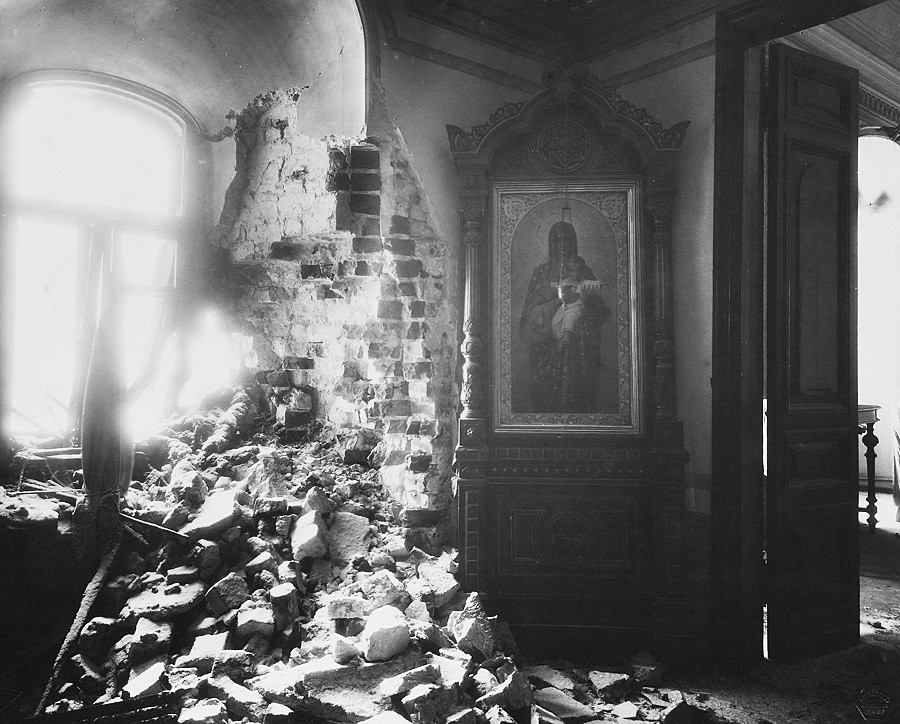
The Metropolitan Chambers of Miracle Monastery after the bombardment of the Moscow Kremlin. The destruction of the windows in the front room. Photograph by P.P. Pavlov. Nov. 5-16, 1917.
The forces loyal to the provisional government hoped for reinforcements – in
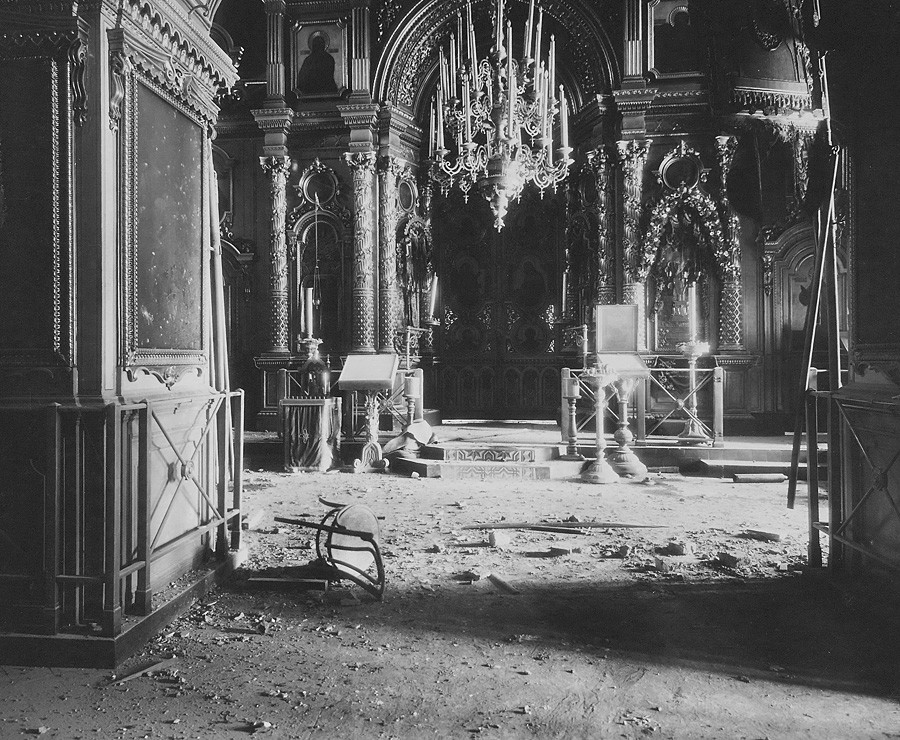
The interior of the Cathedral of the Twelve Apostles after the bombardment of the Moscow Kremlin. View of the altar. Photograph by P.P. Pavlov. Nov. 5-16, 1917.
The shelling of the Kremlin - especially intensive on Nov. 2 - went on for several days. Loyalists were losing ground. The Bolsheviks agreed to free their enemy if they lay down their arms. The revolutionaries kept their word and the cadets and their associates left the Kremlin safely. Soon the Bolsheviks controlled the entire city.

The Patriarch’s Vestry after the bombardment of the Moscow Kremlin. Chamber number 3. General view and broken cabinet. Photograph by P.P. Pavlov. Nov. 14, 1917.
Several churches and monasteries in Moscow’s Kremlin suffered serious damage. The Kremlin’s towers and walls were also hit.
When the recently appointed Bolshevik party minister of education Anatoly Lunacharsky heard about the damage inflicted on the Moscow’s heart, he announced his resignation. However, after Lenin’s
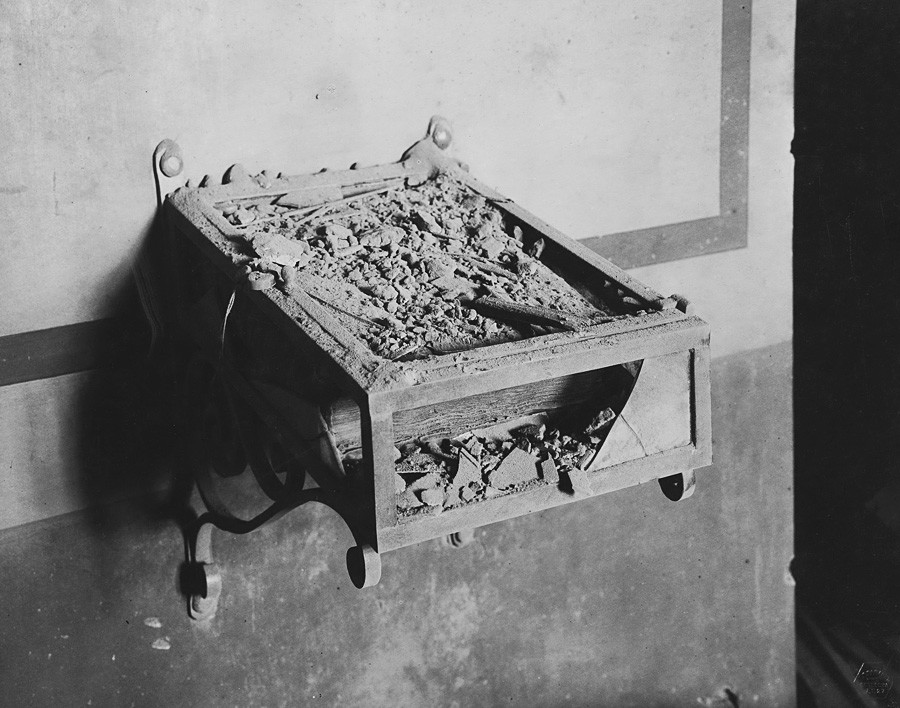
Broken display case with the gospel of Mistislav in the Patriarch’s Vestry after the bombardment of the Moscow Kremlin. Photograph by P.P. Pavlov. Nov. 14 , 1917.
During the course of these bloody
If using any of Russia Beyond's content, partly or in full, always provide an active hyperlink to the original material.
Subscribe
to our newsletter!
Get the week's best stories straight to your inbox